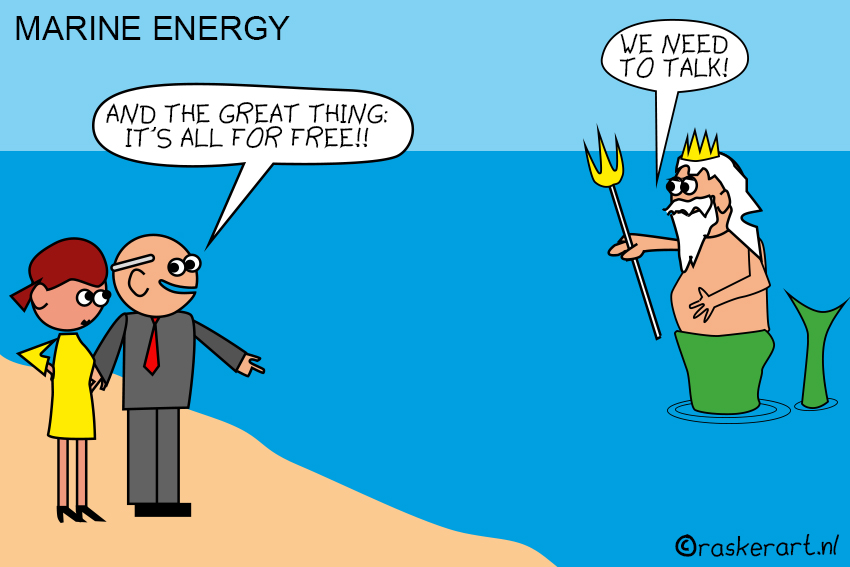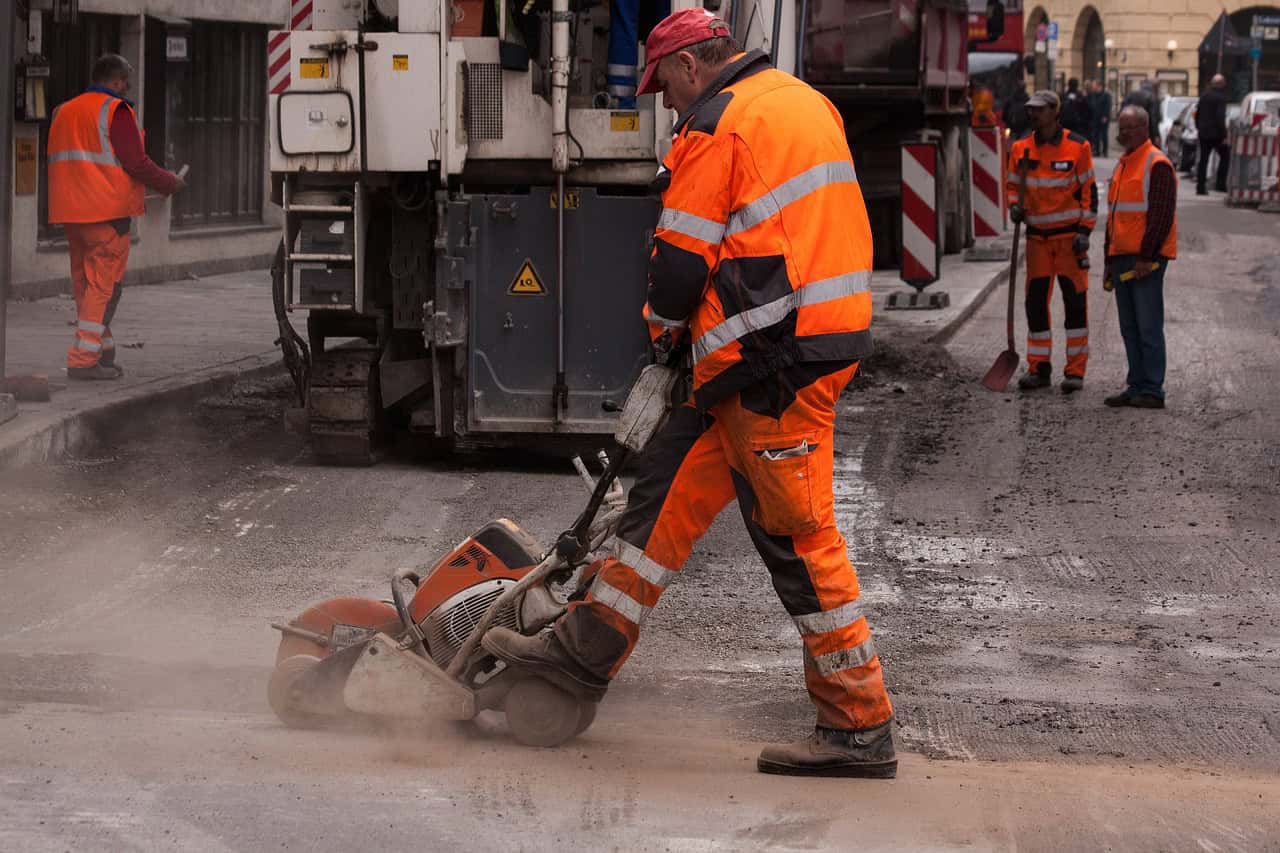
First of all: How does such a tidal turbine work? A current of water is created by the tides, which drives the blades of the tidal turbine. Those rotating blades then drive a generator that produces electricity. This form of sustainable energy falls under the category of marine energy. Energy can also be generated from the force of the waves, the salt content and the temperature differences in the sea.
“Compared to solar and wind energy, tidal energy has not undergone such a rapid development,” says Anton Schaap, Technology and Innovation Advisor at Dutch Marine Energy Centre (DMEC). This is a foundation which has the aim of promoting energy from the motion of the sea.
A mechanical engineer by trade, Schaap has been working on sustainable sources of energy for about thirty years; the last ten years within marine energy. “During the first oil crisis, we started thinking about how to generate energy without using fossil fuels. At the time, it was still based on the idea that these would run out. Wind, solar, and tidal and wave energy were the main focus. Solar and wind energy have really grown from that.”
Vervelend spul
Tidal energy is technically more difficult, Schaap explains. “Seawater is nasty stuff and you can’t access a turbine that easily. With the first generation of wind turbines, you just walked up a set of stairs, inspected it and walked back down.” Solar and wind power have also become very inexpensive. “Projects with wave and tidal energy are currently just pilot projects. They are still very costly; you can only achieve reduction in costs comparable to solar and wind energy when everything is scaled up.”
According to Schaap, tidal turbines are also capable of producing energy in Dutch waters. “The potential is just not that great compared to solar and wind energy.” The tides provide the slow wave motions. “The North Sea has places where there is hardly any tidal motion and places where there is as much as a 15-meter difference,” he adds.
“Compare it to a water bed. You set the water in motion but that motion is not the same everywhere. The Netherlands is just in an area where the currents are not particularly strong. If you go to Brittany, for example, you’ll see harbors that empty out completely when the tide is out. Here, we have a difference of 1 to 2 meters. And as far as the force of the waves are concerned, England lies in the way. Big ocean waves don’t reach here.”
Potential
Sander des Tombe, Dutch Marine Energy Ambassador at DMEC, says that in the long term, the technical potential is about 10 percent of the present electricity demand in the Netherlands. That is partly based on the research by the Netherlands Organization for Applied Scientific Research (TNO) carried out in 2021. “What the economic potential is depends on the (international) developments over the next few years. Some regions can be supplied 100 percent with marine energy, such as Zeeland, the Wadden Islands and the Caribbean.”
The really great potential for tidal and wave energy is in France, Spain, the British Isles and Norway, Schaap said. Off the coast of Scotland, this is being undertaken by the companies SimecAtlantis, and Nova, in addition to the company Orbital, “the most powerful tidal turbine” in Europe.
You can tell that the current is much greater on the Scottish coastline by the way it looks, says Schaap. “There’s really no sand left there. You only have rocks. And if you look at the seabed there, you don’t see a single seawater plant growing anywhere either.” As to why the current is much stronger there, is down to the shape of the countries and the shape of the North Sea, Schaap continues. “If the current were that high here too, our coastline would have been washed away a long time ago.”
Global and regional
Nevertheless, DMEC is committed to securing more support from the Dutch government for more marine energy projects as well. “The Netherlands has the largest offshore industry in the world, and two major dredging companies. They are capable of constructing large-scale offshore wind farms. The techniques that we develop in the Netherlands can be used by those companies all over the world.”
Schaap sees mainly regional opportunities for the Netherlands. “Just like offshore wind turbines, you ideally place tidal turbines directly offshore.” Projects have been undertaken by the company Tocardo in the Oosterschelde and near the Afsluitdijk.
The mechanical engineer points out that the project in Oosterschelde produces a power output of 1.25 megawatts. “To really make a difference in terms of CO2 reduction, we should be talking about gigawatts, not megawatts.” In the case of the Oosterschelde, the turbines in question are tidal turbines that have been installed in front of one of the holes in the storm surge barrier. “I’ve stood above one of those holes. The current is enormous there. In addition to this one hole, there are 61 more. We can make use of those.”
Schaap himself is involved in a project in the port of Vlissingen where a turbine is to be installed in the coming months. The company Water2Energy has developed and tested the tidal turbine.
Underwater airplane
Energy can also be generated from slower water currents. Like with the underwater kite from the Groningen-based company SeaQurrent, which is comparable to the underwater airplane from the Minesto company that has branches in Sweden and Great Britain.
Why do we need to utilise this form of sustainable energy on a regional scale? “In the next thirty years, we have to get rid of all of these CO2 emissions. In the process, we simply need to use all the sources that are available to us. We cannot afford to disregard tidal and wave energy. That energy is always there, even when there is no sun or wind. And it’s 100 percent predictable. You can already calculate what it will produce on a particular day in ten years’ time. You can use this in Zeeland to see to it that there is enough energy when the sun isn’t shining and the wind isn’t blowing.”





